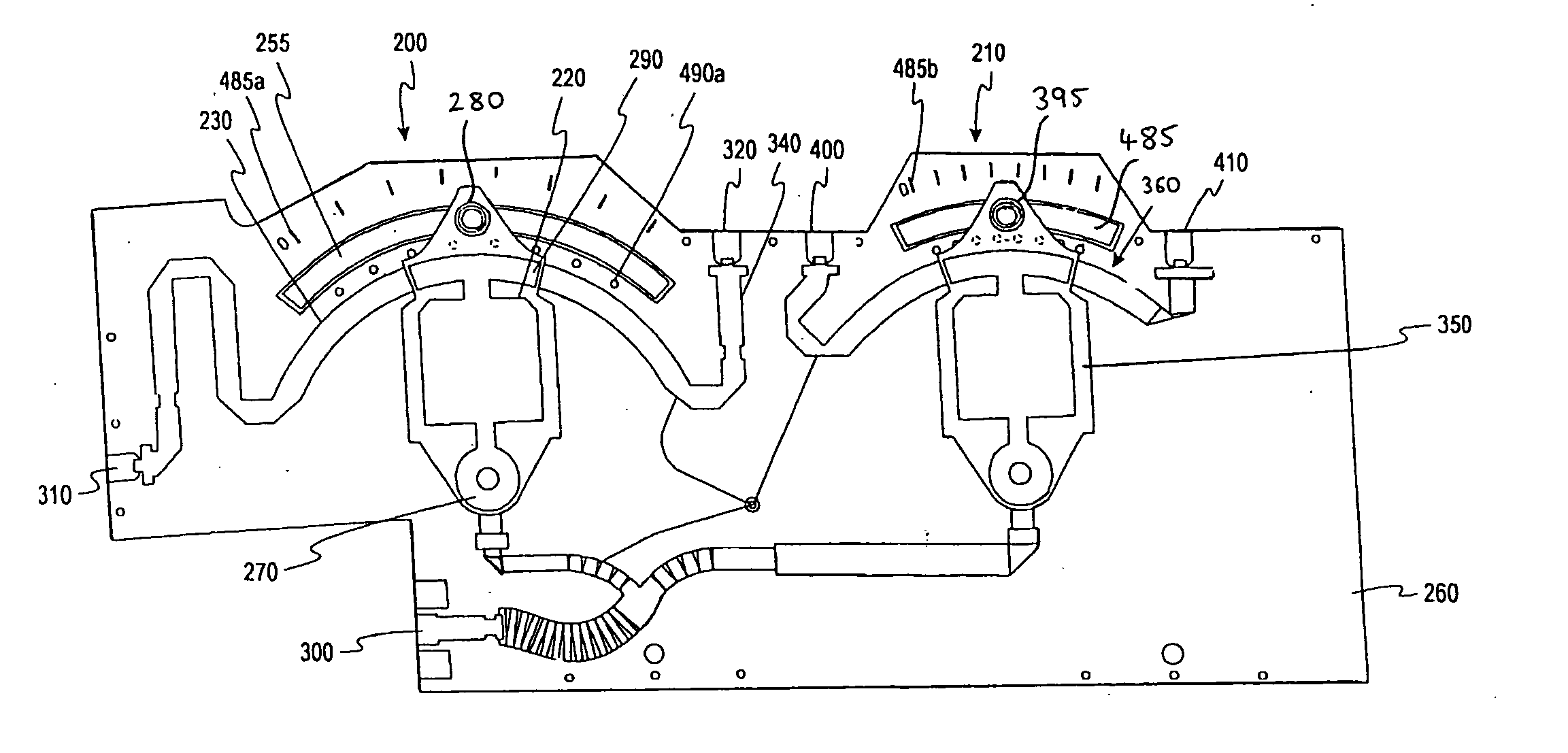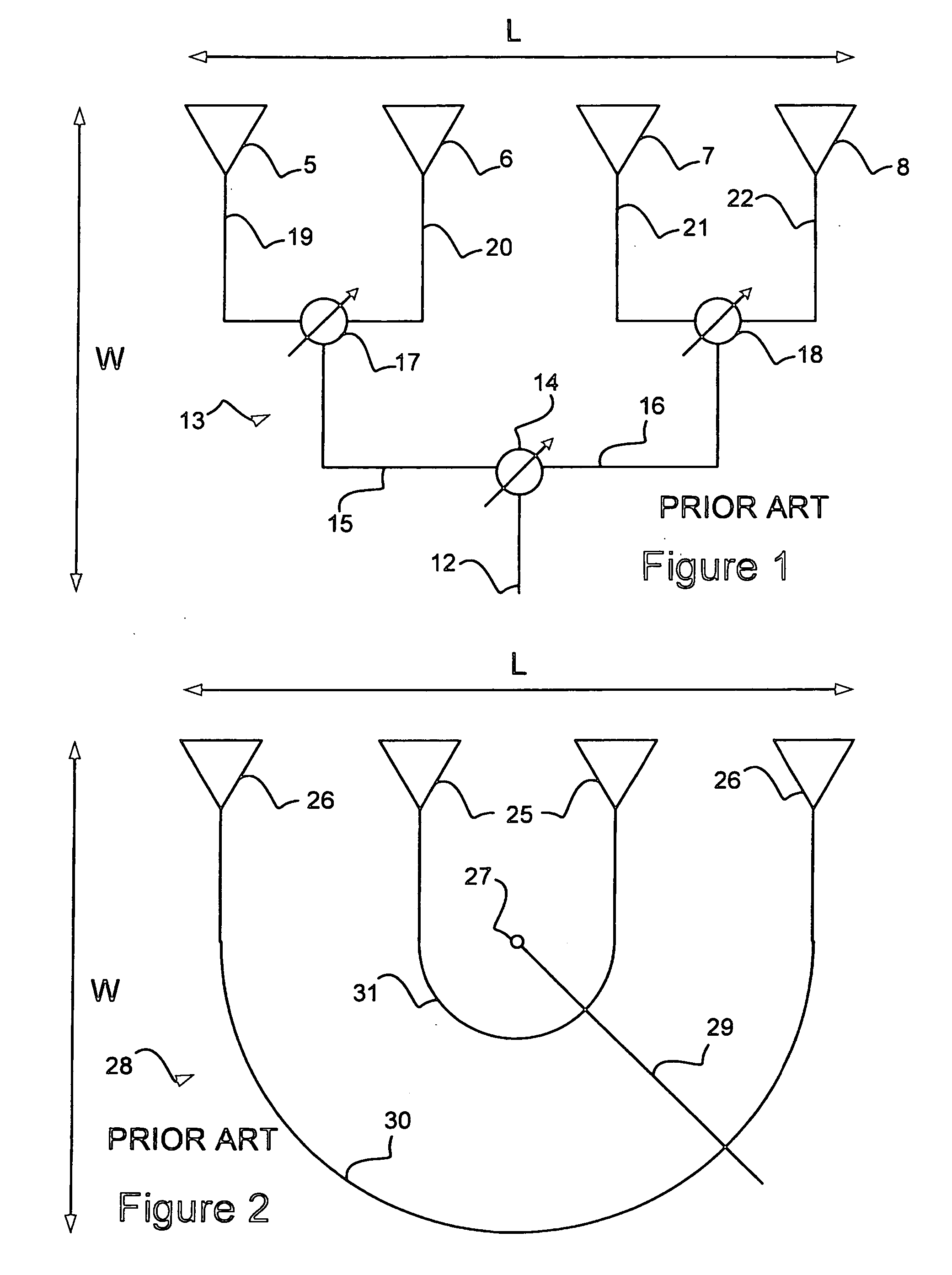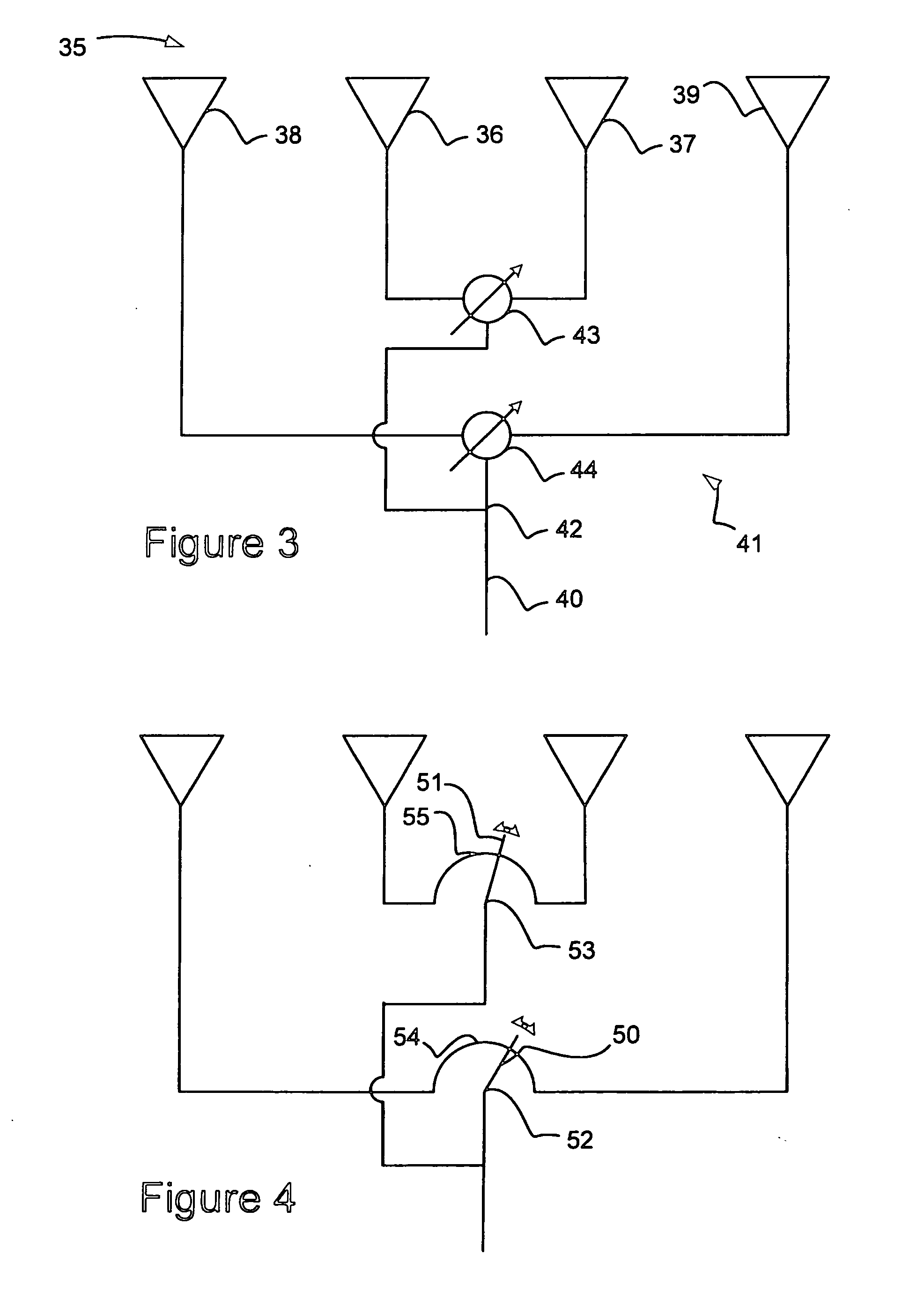Phase shifting network
- Summary
- Abstract
- Description
- Claims
- Application Information
AI Technical Summary
Benefits of technology
Problems solved by technology
Method used
Image
Examples
first embodiment
[0033]FIG. 4 is a schematic drawing of the generic network of FIG. 3;
[0034]FIG. 5 is a front view of the network of FIG. 4;
[0035]FIG. 6 is a rear view of the network of FIG. 4;
second embodiment
[0036]FIG. 7 is a schematic drawing of the generic network of FIG. 3;
third embodiment
[0037]FIG. 8 is a schematic drawing of the generic network of FIG. 3;
[0038]FIG. 9 is a schematic drawing of an antenna incorporating a generic three-pair phase shifting network according to the invention;
[0039]FIG. 10 is a schematic drawing of an antenna incorporating a first generic four-pair phase shifting network; and
[0040]FIG. 11 is a schematic drawing of an antenna incorporating a second generic four-pair phase shifting network.
PUM
 Login to View More
Login to View More Abstract
Description
Claims
Application Information
 Login to View More
Login to View More - R&D
- Intellectual Property
- Life Sciences
- Materials
- Tech Scout
- Unparalleled Data Quality
- Higher Quality Content
- 60% Fewer Hallucinations
Browse by: Latest US Patents, China's latest patents, Technical Efficacy Thesaurus, Application Domain, Technology Topic, Popular Technical Reports.
© 2025 PatSnap. All rights reserved.Legal|Privacy policy|Modern Slavery Act Transparency Statement|Sitemap|About US| Contact US: help@patsnap.com



